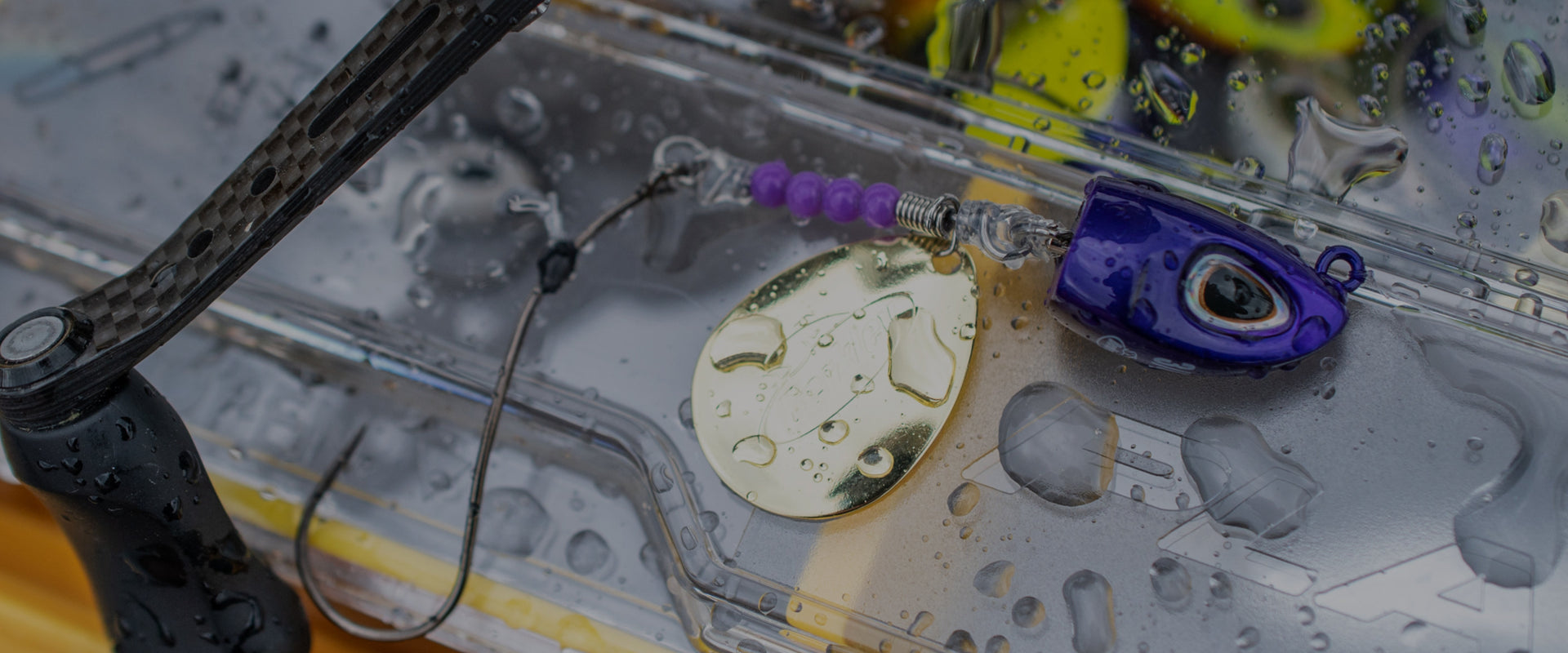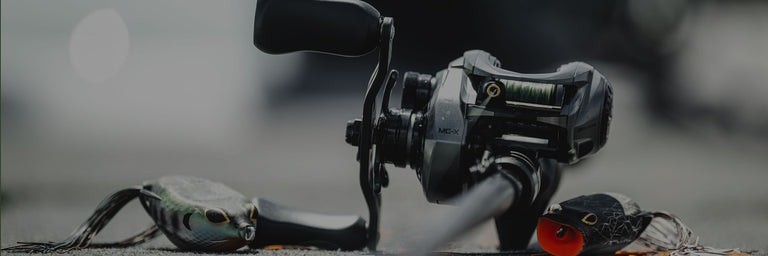
Swimming your way soon—our game-changing Rawler Jigs and the all-new Ripfish are ready to make ripples in the Berkley lineup...
Read More >
Your cart is currently empty.
Stock up on what you need for your next adventure.

Decades ago, anglers had limited fishing line options like "catgut" or silk, requiring high maintenance. In 1938, DuPont's invention of nylon brought about Stren, the first nylon monofilament line, revolutionizing fishing with its castability and knot strength. For nearly 50 years, monofilament dominated until the emergence of braided "superlines," which were stronger and thinner. Later, fluorocarbon emerged as a nearly invisible leader material despite initial stiffness issues. With three distinct line types now available, anglers face choices based on specific needs and conditions, each with its own advantages and compromises.
Braid is very strong for its diameter, and it has virtually no stretch. Because it’s the thinnest of the line types (by breaking strength) and very soft, it casts well. Because it’s the most opaque and visible of the line types, many anglers choose mono or fluoro in clear water. Because braid floats, it’s a viable choice for floating lures. Because it’s the strongest of the lines (by diameter), it’s the obvious choice when fishing in extremely thick or coarse cover. Anglers who are flipping, pitching or punching heavy cover often opt for braided line testing 50 pounds and more.
Best Bets
Berkley Fireline®, the world’s first “superline,” was introduced in 1996. It’s neither a conventional braid, nor a monofilament. The thermally, micro-fused Dyeema® fibers are 3- to 4-times stronger than monofilament offering a true memory-free line that casts long and remains strong.
Berkley x5 offers top-shelf braid performance that won't empty your pockets. It has an advanced 5-carrier construction with a polyethylene core for maximum strength and superior abrasion resistance. x5 is ideal for fishing in thick vegetation and heavy cover. Offered in Berkley’s highly visible crystal color for easy strike detection, Berkley x5 delivers affordable performance.
Berkley x9 offers an extremely smooth and strong line at affordable pricing. The 9-carrier construction with a polyethylene core keeps x9 perfectly round, letting it smoothly flow through rod guides for exceptionally long casts and low friction. x9’s high-strand count enhances wear resistance for fishing abrasive structure while providing superlative knot strength.As you can see, there are many considerations when choosing the right line. However, armed with a bit of knowledge, the task should be much simpler.
Monofilament is strong, but far less strong than braid for its diameter. It has significantly more stretch than either braid or fluoro. Because it floats and is translucent, it’s an excellent choice for fishing floating topwater lures. It is generally more castable than fluoro, but less castable than braid.
Berkley Trilene XL is a leader in the monofilament world. It has the best properties of mono and is extra-limp (XL) so it casts extremely well. The stretch inherent in mono makes it a viable choice for any baits with treble hooks. Trebles rarely get the kind of penetration that single hooks do, thus a little stretch can help to keep fish on the hook through steady pressure. Lines with less stretch are less “forgiving.”
Best Bets
Berkley Trilene XT® and Trilene XL® are both outstanding monofilament choices. Trilene XT (Extra Tough) excels when fishing baits in abrasive environments—areas where extra toughness and abrasion resistance is a plus. Think, for instance, running spinnerbaits through weedy environments. Trilene XL (Extra Limp) excels when a supple monofilament is required. It’s especially popular on spinning gear because its limpness reduces line memory as well as tangles and spooling issues.
Fluorocarbon is roughly as strong as mono for its diameter, but far less strong than braid. It has more stretch than braid and stretches differently than mono. As you pull mono, the line begins to stretch almost immediately; fluorocarbon only begins to stretch after a given load has been applied to it. Because it sinks, fluorocarbon is generally a poor choice for fishing floating topwater lures. It’s the least cast-friendly of the three, but because it has the same refractive qualities as water, it’s an excellent choice for clear water fishing conditions.
Berkley Trilene 100% Fluorocarbon is a breakthrough in this line type. It’s an extremely castable fluorocarbon and basically disappears in water. It may be fishing’s most versatile line. It’s a great choice for crankbaits, spinnerbaits, soft plastics and just about anything except floating topwaters.
Generally, lighter, thinner lines will impart more action to your lures, so going a little lighter can mean more bites. Heavier lines of any type give you more strength but may mute lure action. When fishing “dirty” water with less than a foot or two of visibility, there’s little reason to go “light” or to choose a less visible line like fluorocarbon or monofilament.
Got it? That’s a lot to take in; a lot to remember. But once you get it, you’re ready to make the kind of informed decisions that will improve your fishing.
No line is always best for any fishing situation. Every line choice is a compromise of sorts. If you want the strength of braid, you can’t have the forgiveness and stretch of monofilament or the clarity of fluorocarbon. If you want the near invisibility of fluorocarbon, you can't have the floating quality of braid or monofilament.
We have wonderful fishing lines today — the best ever devised — but no one line can do everything. No line has all of the great qualities without any of the sacrifices.The line you should choose depends on three primary factors: your lure or hook choice, the water clarity, and any cover or obstructions in the water you’re fishing. Armed with that information, you're ready to make an informed decision that will benefit your angling.
Best Bets
Berkley FluoroShield® is a new fluorocarbon-infused co-polymer (more than one polymer) line offering the clear characteristics of fluorocarbon with enhanced abrasion resistance. Better yet, FluoroShield offers the suppleness of monofilament, making it a very castable choice for both spinning and casting gear.
Berkley 100% Fluoro Professional Grade has been the benchmark in fluorocarbon lines for years. Like Fluoroshield, Berkley 100% Fluro Professional Grade offers a distinct softness that spinning enthusiasts appreciate. Additionally, Berkley 100% Fluoro Professional Grade tangles less than conventional fluorocarbons.